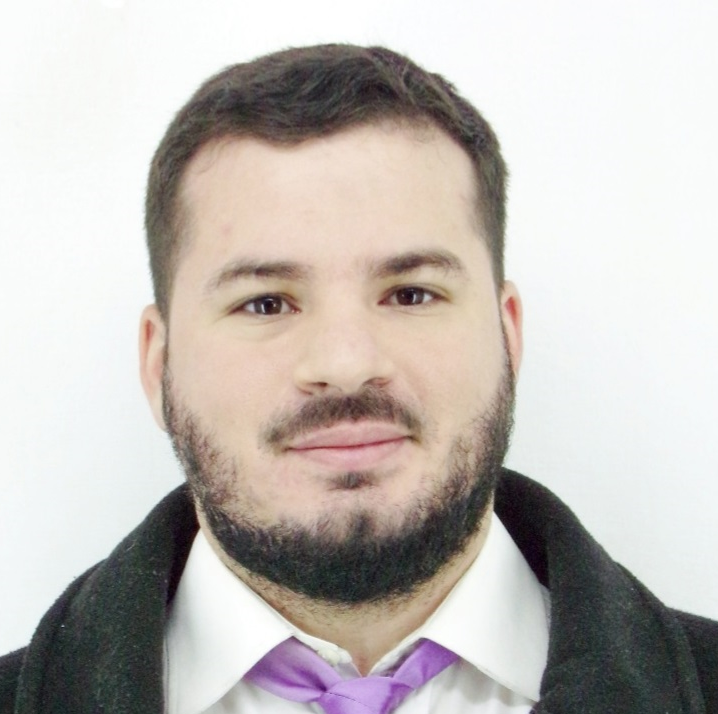Author: Emanuel Pietrobon & Juan Martin G. Cabañas – 24/08/2020
Introduction
In this informative briefing we will approach the geo-religious transformation that Latin America is experiencing:
A brief analysis of an exceptional papacy
Seven years after the election of Pope Francis to the papal throne, has the Catholic Church managed to stop the advance of Protestantism? Seven years have now passed since Jorge Mario Bergoglio assumed command of the Petrine throne, choosing the name of Francis and becoming the first pontiff from the so-called global South.
The three cornerstones that have characterized the Francis phenomenon from the very beginning:
The fight against the troublesome clericalism, profound revision of the ecclesiastical hierarchy; a geopolitical focus shifted from the dying and now post-Christian West to all those theaters that are fighting for the transition to a multipolar order, such as Russia, China and Iran; this direction course have made him the victim of a gigantic propaganda operation by the White House and the conservative sector of the church itself (which Bannon has been a great interlocutor between the two) that aimed to discrediting his image and work in the eyes of the faithful.
Francis’ vision is uncomfortable and dangerous for the American-centric and liberal status quo; this is the reason why a campaign has been launched against him, who will be remembered by posterity as one of the most revolutionary popes in the history of the Catholic Church.
The successes achieved in seven years have been manifold: the peace agreement between the Colombian government and the FARC, the star exercised over the Obama administration that led to the normalization of relations between the White House and Cuba and the nuclear agreement Iranian, the virtual end of the schism between Catholicism and Orthodoxy, the establishment of an intense and constructive dialogue with the main representatives of Sunni Islam aimed at improving the living conditions of Christians in the Muslim world and, last in temporal order, the agreement on the appointment of bishops with China, conceived as the first stage of a long journey that could end with the full recognition of the Catholic Church in the country.
In two geopolitical theaters, however, the papal agenda did not produce results; on the contrary it suffered a setback.
The first is Europe, a scenario in which, however, Bergoglio has shown a certain lack of interest since his rise to the papal throne, because he is maybe aware of the inevitability of his post-Christian transformation.
The second is Latin America, the cradle of the pope, the most Catholic continent, which in the coming decades is preparing to become more Protestant. Here, since the Cold War, an underground geo-religious clash has been going on between the Vatican and the United States, fought with Bibles, which is rewriting the identity of the Iberian America.
The Catholic faithful have decreased everywhere, from Rio Grande to Tierra del Fuego against the background of the simultaneous increase in Protestants of evangelical and Pentecostal type. The first heads of state of evangelical faith have also been elected, such as Jimmy Morales in Guatemala, Jair Bolsonaro in Brazil, an Janine Añez in Bolivia (country were the Neo-Pentecostals played a mayor roll in the coup against Evo Morales).
The Anglo-Saxon evangelicalism can be considered a good weapon (a spiritual one) for the consolidation of Hegemony; given its malleability by the absence of a top-down structure headed by a supreme authority (it can produce hundreds of “religious franchises” in a matter of a year).
Numerous evangelical leaders of the global South have been trained professionally (acquiring the notions of tele-evangelization made in the USA), doctrinal and ideological in the United States – such as Edir Macedo, the founder of the very powerful -Universal Church of the Kingdom of God – and have been helped in the initial spread of the churches, becoming the promoters of a theological message radically different from those of Catholic origin: the theology of prosperity.
Under the banner of this theology, according to which constancy in the manifestation of faith would be rewarded by God through wealth, controversial characters such as Cash Luna, founder of the House of God in Guatemala, or Macedo, have been able to welcome all those Catholics (especially poor) who, feeling betrayed by the war waged by the Holy See against the Latin American theologian-revolutionaries and guerrilla-priests of the Cold War, fled en masse from the Catholic Church. The historical error of not having understood liberation theology, the inability to deal with secularization and sexual and financial scandals, led to a collapse of the Latin American Catholic population.
The origin of the geo-religious phenomenon
The rise of evangelicalism, which is a term for general use (but we should speak of neo-pentecostalism) is the result of several processes sustained over time that ended in a real revolution. We can reconnect the birth of “a plan” at the beginning of the 20th century with the founding of the African Methodist Episcopal Church. But at the time the target wasn’t Latin America. Two events have given great impetus to this revolution. The first occurred in the middle of the century: the hunt for Protestant missionaries from China in the aftermath of the triumph of Maoism. The second occurred in the 1980s: the popularization of evangelicalism by means of the large press and grassroots communities.
Evangelicalism is a branch of Protestantism and is characterized by a series of beliefs, including the rejection of papal authority and apostolicism (the lack of a centralized authority), a different conception of the Holy Spirit,, the theology of prosperity and the doctrine of spiritual warfare.
The current situation
In 2014, data from the Pew Research Center in hand, the openly Catholic Latin American population had dropped to 69%, 23% fewer faithful since 1970, while evangelical Protestants had grown from 9% to 19% of the total population. The collapse affects every single country of the subcontinent, but it was particularly strong in Brazil: the Datafolha Institute estimated that in the period 1970-2016 Catholics decreased by 40%, going from 90% to 50% of the population, while the evangelicals have become 29% of the population and half of them claim to be former Catholics.
It’s a “curious” coincidence that the decatholicization was particularly strong towards Brazil: the first political and economic power in Latin America, the most Catholic country in the world, and potential obstacle for US interests in the continent by virtue of its geopolitical weight, further frowned upon later the two Lula da Silva governments.
Already in Latin America 25% of the population identifies as evangelicals and the greatest concentration is in Central America, a real bulwark, where they represent between 40% and 50% of the total population of those countries.
Is there a very clear contrast between Evangelicals and Catholics in terms of electoral preference? What do Latin American Catholics tend to vote for?
Evangelicals are quite consistent from a political point of view: They tent to vote in bloc and show a preference for parties that we could define as neoconservatives and neoliberals. This preference is given by the fact that evangelicals are socially very conservative.
Latin American Catholics vote crosswise: their ballot goes as much to the right as to the left. We are talking about a much broader and more diverse universe, which also faces a process of secularization. The fact is that there are conservative and also progressive Catholics. We must consider the fact that Liberation Theology (strongly identified with the political left) and the Theology of the People (slope from which Francis comes, identified with a transversal vision of politics) were both born in the womb of Catholicism, while the theology of prosperity was born from the Protestant one.
Furthermore, we must consider that Catholicism has greatly influenced the political evolutions of the region, within political movements, with a marked popular sense and humanist vision, as in the case of traditional Peronism, just like in Europe there have been Christian Democratic Parties as leading actors.
Current situation in Argentina and Brazil
The two South American giants usually set trends in the subcontinent. Let’s analyze their situations:
In Brazil, evangelicals now represent more than 25% of the population, while in Argentina they are about 15%. But in Argentina we have something special compared to Brazil: the agnostic-atheist factor. They rise faster than evangelicals and, in fact, there more agnostics and atheists than evangelicals.
What has the Catholic Church done to stop this decline? Was there a Francesco effect or not?
The Church has embarked on a long process of reform both in terms of public image that is, in its relationship with the faithful, and modernization of doctrine and institutions, starting with the councils and bodies that respond to the Holy See. It is a journey that began in the 1960s and which culminated with the election of Pope Francis.
The choice of a pontiff from Latin America was not accidental, it was clearly strategic. However, the reform agenda was implemented too slowly, and it proved not to be enough. In fact, the evangelical advance wasn’t stopped.
A major role in this failure was the harsh repression of the most modernizing, popular, progressive sectors within the church, as well as the reluctance to put more emphasis on grassroots sectors, like the “curas villeros” (the priests who are among the people, in the poorest neighborhoods, in the working-class neighborhoods, Pope Francis himself was a cura villero).
What is the secret of evangelical rise? What they offer that the Catholic Church fails or does not have?
The advantages of the Neo-Pentecostals are: a more direct and effective communication with the public, to be seen as something new, the peculiarity of having much more flexible rules for the recruitment of clergy than Catholics (it can produce hundreds of “religious franchises” in a matter of a year).
Flexible organization, flexible recruitment rules, large capital, and diffusion in the media, no constraints in a territorial dimension: in practice they do not have the limits of the Catholic Church.
The competition: Catholicism vs. Evangelism
Most likely the Catholic Church will continue to lose faithful, but this must not lead us to make a mistake: Catholic decline will not necessarily translate into favorable terms for evangelicalism. This is because agnosticism, atheism, new spiritualities and other religions are also growing a lot. It is not a fight between Catholics and Evangelicals as it is often described, so there can be no real winner.
The geopolitical consequences of the transition from Catholic Latin American to more Americanized-Protestant societies
From a geopolitical point of view, evangelicals have shown in all countries that they adhere to a certain type of politics and support certain sectors that have typically been close to The United States of America (USA).
Their ascent would clearly entail the consolidation of the hegemonic role of the USA on the continent. Evangelicals have given strong support to leaders like Bolsonaro in Brazil and Añez in Bolivia (they had a prominent role in the coup against Evo Morales), and they had played a key role in the consolidation of neoconservative and neoliberal agendas in the region. Processes that some Latin American analysts have called: the conservative restoration.
Evangelicalism could really be an important key for the USA to constantly reshape the geopolitical positioning of the region and consolidate its hegemony across the continent.

Emanuel Pietrobon, University of Turin (Italy) – Higher School of Economics in Saint Petersburg (Russia)

Juan Martin González Cabañas – Analyst at Vision & Global Trends. International Institute for Global Analyses and Dossier Geopolitico

[…] PUBLICACION ORIGINAL: https://www.vision-gt.eu/news/the-slow-decline-of-catholicism-in-latin-america/ […]